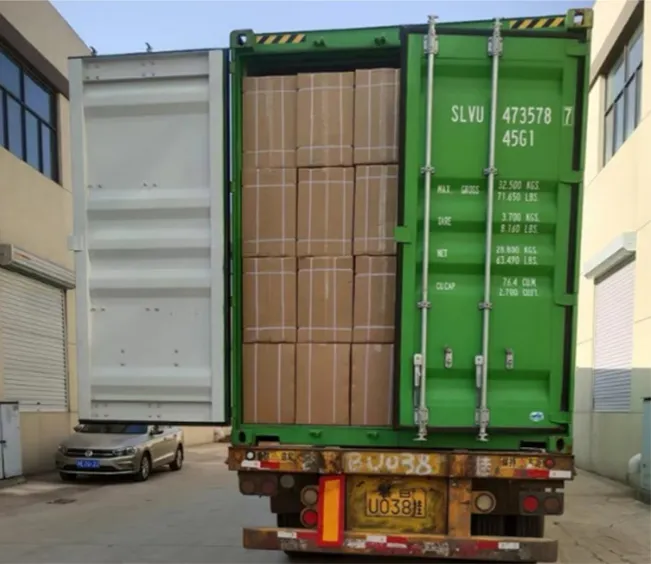Cost of Solar Panels for Agricultural Use and Benefits for Farmers
The Economics of Solar Panels in Agriculture Pricing and Benefits
In recent years, the intersection of agriculture and renewable energy has become increasingly relevant. As farmers seek ways to reduce costs and improve efficiency, solar panels have emerged as a promising solution. This article explores the pricing of agricultural solar panels and delves into the economic benefits they bring to the farming sector.
Understanding Solar Panel Pricing
The price of solar panels has seen significant changes over the last decade. As technology has advanced and production has scaled up, the cost of solar photovoltaics (PV) has decreased remarkably. According to the International Renewable Energy Agency (IRENA), the global average cost of solar power has declined by approximately 89% since 2010. This trend is particularly beneficial for the agricultural sector, where land and energy costs can substantially affect profit margins.
Typically, the price of agricultural solar panel systems can vary depending on a range of factors, including the size of the installation, the type of solar technology employed, and local incentives or tax breaks. Small-scale systems suitable for individual farms can start around $10,000 to $20,000, while larger installations may reach hundreds of thousands of dollars. Additionally, prices can differ based on the installation's geographical location, local labor costs, and the specific energy needs of the farm.
Factors Influencing Costs
1. System Size and Type The size of the solar installation plays a significant role in overall costs. Larger systems, while initially more expensive, tend to offer better economies of scale. Furthermore, the type of solar technology employed—such as monocrystalline, polycrystalline, or thin-film solar panels—also impacts the price. Monocrystalline panels, while more efficient, tend to be more expensive compared to others.
2. Incentives and Rebates Government incentives and rebates can significantly reduce the upfront costs of solar installations. Many agricultural producers are eligible for federal and state programs designed to encourage renewable energy adoption. Programs such as the USDA's Rural Energy for America Program (REAP) can provide crucial financial support for solar projects.
3. Financing Options Various financing solutions, including loans, leases, and power purchase agreements (PPAs), can help farmers manage the upfront costs of solar installation. Opting for a financing option that best suits the cash flow of a farm can make solar energy more accessible.
agriculture solar panel price

Economic Benefits of Solar Panels in Agriculture
Investing in solar panels offers numerous economic advantages for farmers
1. Reduced Energy Costs One of the most immediate benefits of installing solar panels is the reduction in energy bills. By generating their own electricity, farms can significantly cut their reliance on grid power. In some cases, farmers may even eliminate their electricity bills entirely.
2. Increased Property Value Solar installations can enhance the overall value of a property. Potential buyers are often attracted to properties with renewable energy systems due to the long-term savings associated with reduced energy costs.
3. Diversification of Income Agriculture is often subject to market volatility, affecting farm incomes. Solar power can represent a new revenue stream, as farmers can potentially sell excess energy back to the grid through net metering programs.
4. Sustainability and Branding In an era of increasing environmental awareness, adopting solar energy can improve a farm's sustainability profile. Consumers are more inclined to support businesses that prioritize environmental responsibility, which can enhance a farm's brand image.
5. Resilience Against Price Fluctuations With energy prices prone to fluctuations, having a reliable and self-sustained energy source helps farms mitigate the risk of rising electricity costs in the future.
Conclusion
As the agricultural sector continues to face challenges, the adoption of solar energy presents a viable solution for enhancing economic stability and sustainability. While the initial investment in solar panels can be significant, the long-term savings and financial incentives available make them an increasingly attractive option for farmers. By embracing solar technology, farmers not only contribute to a greener future but also pave the way to greater economic resilience, ensuring that they can thrive in an evolving agricultural landscape. As the conversation around renewable energy continues to expand, the agriculture industry stands at a promising intersection of innovation and sustainability.
-
String Solar Inverter: The High-Efficiency Solution for Smart Solar EnergyNewsJul.14,2025
-
Revolutionizing Rooftop Energy with the Power of the Micro Solar InverterNewsJul.14,2025
-
Power Independence with Smart Off Grid Solar Inverter SolutionsNewsJul.14,2025
-
On Grid Solar Inverter: Powering the Future with Smart Grid IntegrationNewsJul.14,2025
-
Monocrystalline Solar Panels: High-Efficiency Power for the Future of Clean EnergyNewsJul.14,2025
-
Bifacial Solar Panel: A Smarter Investment for Next-Generation Energy SystemsNewsJul.14,2025







